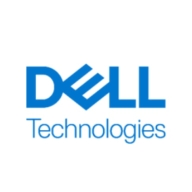


Dell PowerMax NVMe and Hitachi VSP E Series are competing enterprise storage solutions designed for demanding environments. Dell PowerMax NVMe has the upper hand in scalability and innovation, while Hitachi VSP E Series is favored for reliability and comprehensive data management.
Features: Dell PowerMax NVMe provides real-time machine learning, extensive scalability, and integrated end-to-end NVMe support. Hitachi VSP E Series offers efficient virtualization, data management capabilities, and strong security features.
Ease of Deployment and Customer Service: Dell PowerMax NVMe streamlines deployment with accessible support for quick implementation. Hitachi VSP E Series presents detailed deployment options and responsive customer support for customizable setups.
Pricing and ROI: Dell PowerMax NVMe generally incurs higher initial setup costs but offers advanced performance features that may justify the investment in the long run. Hitachi VSP E Series has competitive pricing with a lower initial investment, potentially offering faster ROI in stable environments.



Pure Storage FlashArray//X is the world’s first enterprise-class, all-NVMe flash storage array. It represents a new class of storage – shared accelerated storage, which is a term coined by Gartner – that delivers major breakthroughs in performance, simplicity, and consolidation.
Dell PowerMax is the industry’s most secure mission-critical storage platform. With NVMe Dynamic Fabric technology, PowerMax breaks from traditional storage limitations, enabling seamless integration with cloud-native and legacy applications. Designed with a powerful scale-up and scale-out architecture, PowerMax supports mission-critical applications at scale with zero downtime and ultra-low latency. The latest PowerMaxOS 10 release harnesses AI-driven efficiencies for trusted performance, capacity, and security. By choosing PowerMax, you can trust in a secure, intelligent, and always modern storage solution that unlocks the full potential of your data to drive business success.
Hitachi VSP E Series offers an advanced storage solution designed for enterprises seeking scalability and performance. It is suitable for a range of applications, providing reliability and efficiency to meet demanding IT environments.
Hitachi VSP E Series is designed to enhance storage capabilities with robust features catering to needs such as data management, storage optimization, and system versatility. This series integrates seamlessly within IT infrastructures, offering improved data protection and resource management. Its enhanced storage architecture ensures data integrity while supporting high data loads efficiently, making it a go-to choice for enterprises requiring high-performance storage systems.
What are the most valuable features of Hitachi VSP E Series?Hitachi VSP E Series is widely implemented in industries such as finance, healthcare, and manufacturing, where data integrity and speed are crucial. Its ability to integrate with existing IT frameworks makes it a valuable addition to businesses aiming to streamline data processes while maintaining high standards of data protection and system reliability.
We monitor all NVMe All-Flash Storage Arrays reviews to prevent fraudulent reviews and keep review quality high. We do not post reviews by company employees or direct competitors. We validate each review for authenticity via cross-reference with LinkedIn, and personal follow-up with the reviewer when necessary.